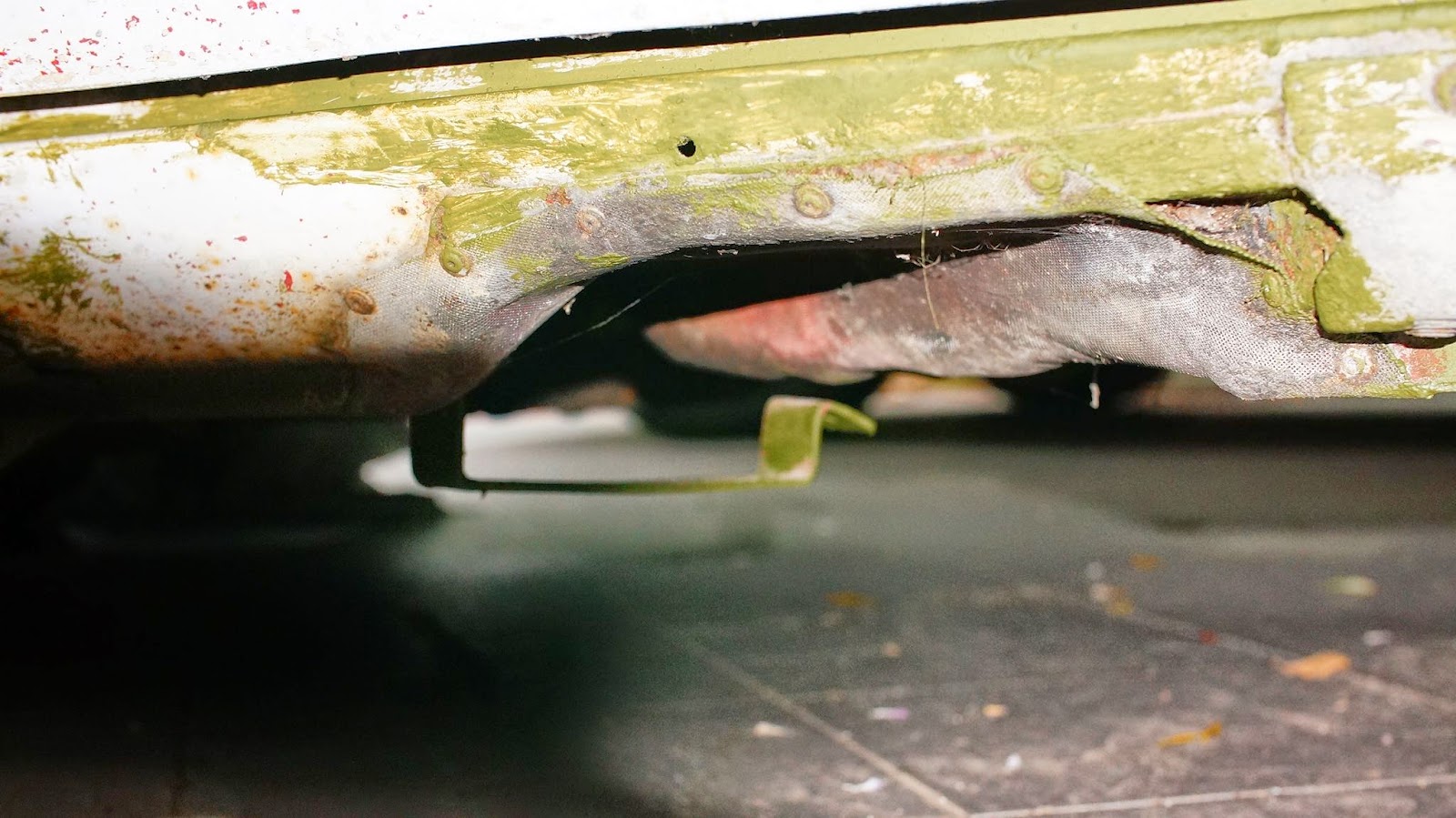I have been blessed to have had the pleasure of seeing and touching some fantastic and rare race cars from the 70s. The first car to be described here I saw in Kuala Lumpur back in 1993. This was the "Nissan Turbo Violet" named on the web by bloggers who have seen pictures of the car which I think is more correctly called a "Datsun 160j SSS KP710 Violet Turbo Group 5".
It was raced by Nissan/Datsun in Malaysia under the banner of Tan Chong and Sons Motor Co. Sdn. Bhd. I present to you the rare Datsun 160J SSS KP710 Violet Turbo Group 5 factory "works" machine. This one is car #120. Car #123 won the Malaysian GP in 1974, most likely the 3rd generation FIA Group 5 category. I was informed by older folks back in 1993 that 3 similar cars were brought in from Japan. This was the only one that remained whilst the other 2 were shipped back to Japan.
 |
Figure 1
Front view of car as seen back in 1993 |
The car, as told to me by an older Malaysian race car driver, was driven by a Kunimitsu Takahashi, the very famous Japanese race car driver who is also known as the "father of drifting". Apparently this car saw action on the Malaysian race track in 1973-1974, presumably the old track at Shah Alam.
At this stage, the race car driver in each of one of you reading this blog is probably asking, "What engine is under the hood???". I shall gratify that suspense next...
 |
Figure 2
Car #120 is apparent from the side sticker. |
There is a turbocharger fitted albeit minus an intercooler, with a rather large well-finned plenum chamber feeding pressurised air to the 4 throttles intake!. Wastegate unit is fitted in cabin under the dash on the passenger side exhausting to the floor. The exhaust manifold is a very well made all-stainless steel piece with a serious fan-shaped collector of all 4 pipes feeding the turbo intake flange.
 |
Figure 3
View of this engine in this article is probably the only one you'll see on the web. |
The engine is an LZ version and not any that I have seen posted on the Web. Let me explain that the block is stamped L16, however with an extra rib seen only on the L18 block. I have not found the official name for designating this particular incarnation of a turbocharged LZ.
By the way, the LZ is actually a competition-only non-mass production 16-valve head fitted to the venerable L series of 4-cylinder Datsun/Nissan engine from the L14, L16, L18 to the L20B. There are of course other larger capacity blocks such as L22 4-cylinder versions that may have been retrofitted with this head.
This LZ is not to be confused with the twin plugs Naps-Z heads also known as Z16, Z18, Z20, Z22 and Z24 that come out in year 1980 and later. There was also a turbocharged Z18ET driven by George Fury in a Nissan Bluebird 910 that was very successful in the Australian Touring Car Championship in the mid-80s.
 |
Figure 4
Bosch D-Jetronic EFI customised with a trim panel for in-car adjustment. |
First off, it runs on a D-Jetronic fuel injection system (an old Bosch MAP sensor type system) and cannot be classified as either the LZ20R of the Tomica Nissan Skyline KDR30 Monster nor the LZ20BT of the Nissan S110, S12 or the Bluebird KY910 all of which made their debut in the 80s.
This particular LZ was a 1st generation version that has not been seen or heard nor recorded on the Web as far as I know, besides the people who created it in the early 70s.
 |
Figure 5
Another view of the LZ18 Turbo engine. |
The D-Jetronic EFI system, essentially an early manifold absolute pressure sensor system running constant fuel pressure has a fuel trim panel box connected to the ECU allowing for finer settings of the fuel/ignition mixture, I presume.
 |
Figure 6
A large finned intake plenum with blow-off valve at front. |
Speaking of the LZ 16-valve cylinder heads, there are actually 2 types that I've seen. The earlier version, as in this car, has a smooth valve cover, much like the beloved Ford BDA(BDG) engine and the later Formula Pacific derived heads have finned valve cover design.
I've checked on the web and all turbocharged LZs actually run more modern EFI system. i.e. LZ20R or LZ20BT(of the finned valve cover variety).
I read with surprise that even Nissan's many museums in Japan are apparently missing this model as it would have been Nissan's very first turbocharged LZ18 on the world racing scene back in 1974 then.
Keep checking back as I will update this with more postings. Hope you've enjoyed it. :-)


.jpg)


.jpg)

.jpg)









.jpg)

.jpg)
.jpg)













